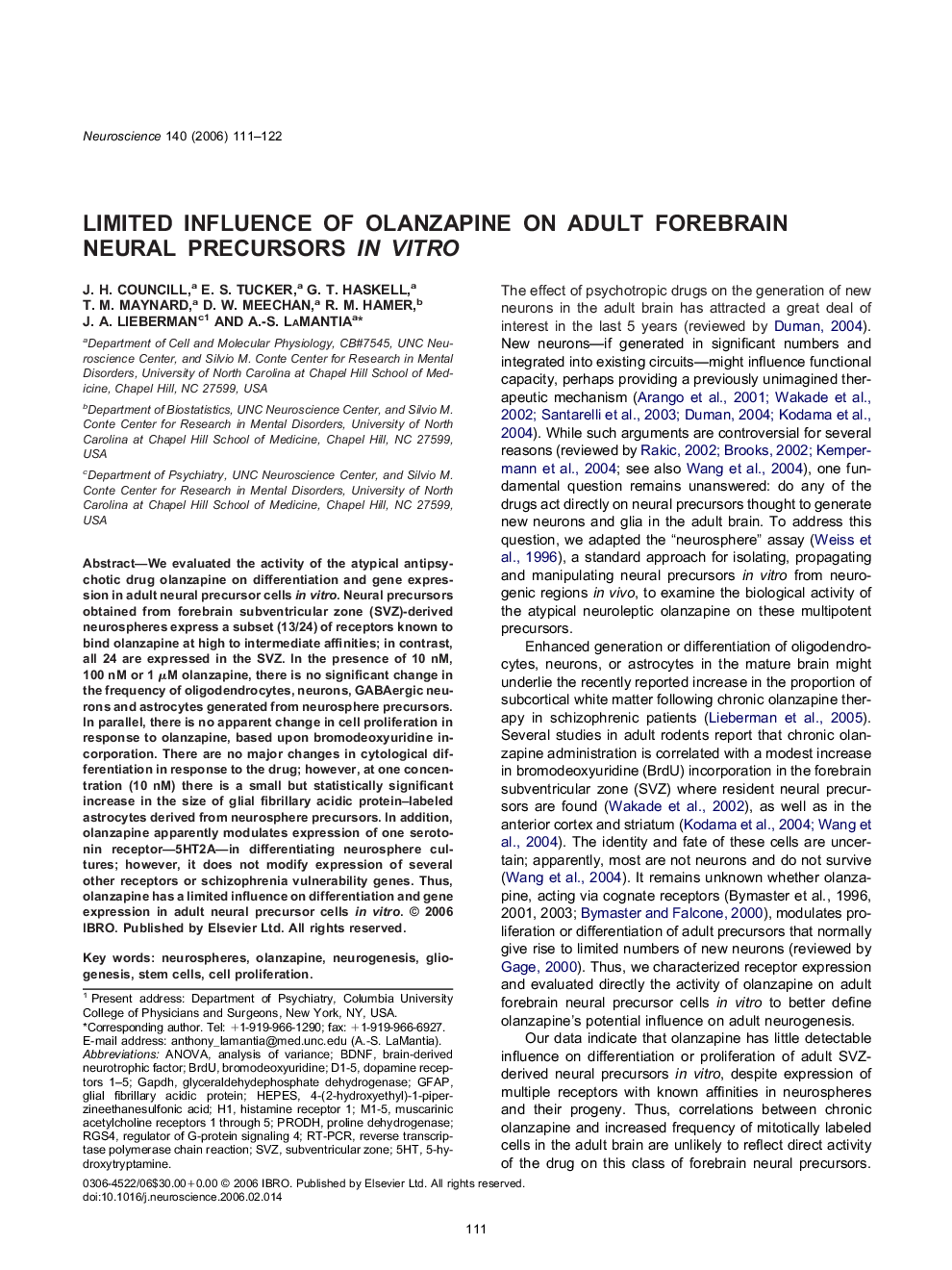| Article ID | Journal | Published Year | Pages | File Type |
|---|---|---|---|---|
| 4342810 | Neuroscience | 2006 | 12 Pages |
We evaluated the activity of the atypical antipsychotic drug olanzapine on differentiation and gene expression in adult neural precursor cells in vitro. Neural precursors obtained from forebrain subventricular zone (SVZ)-derived neurospheres express a subset (13/24) of receptors known to bind olanzapine at high to intermediate affinities; in contrast, all 24 are expressed in the SVZ. In the presence of 10 nM, 100 nM or 1 μM olanzapine, there is no significant change in the frequency of oligodendrocytes, neurons, GABAergic neurons and astrocytes generated from neurosphere precursors. In parallel, there is no apparent change in cell proliferation in response to olanzapine, based upon bromodeoxyuridine incorporation. There are no major changes in cytological differentiation in response to the drug; however, at one concentration (10 nM) there is a small but statistically significant increase in the size of glial fibrillary acidic protein–labeled astrocytes derived from neurosphere precursors. In addition, olanzapine apparently modulates expression of one serotonin receptor—5HT2A—in differentiating neurosphere cultures; however, it does not modify expression of several other receptors or schizophrenia vulnerability genes. Thus, olanzapine has a limited influence on differentiation and gene expression in adult neural precursor cells in vitro.
